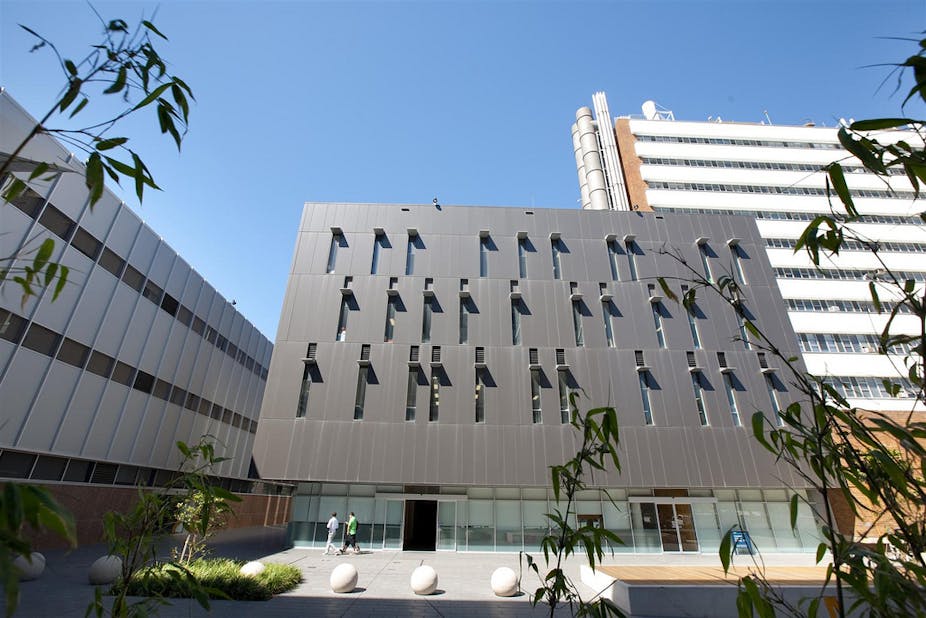The Australian university sector recorded a record operating surplus in 2010, quadrupling from 2003 to a total of $1.95 billion. Yet higher education analysts say that the quality of coursework education is falling and is unlikely to lift without “compelling external pressure”.
In a report released today by the Federal Department of Education, the University of New South Wales topped the list for 2010, reporting a surplus of $141.1 million. Apart from a large drop during 2008, when university investments took a hammering in the Global Financial Crisis, surpluses have risen year on year since 2003.
Yet despite the growing war chests, student-to-staff ratios sit at record high levels. Analysis by the LH Martin Institute that purports to be more realistic than Department of Education figures puts the national ratio for 2010 at 34.1 coursework students per teaching staff member. The 2000 ratio was 24.8 coursework students per teacher.
The LH Martin study, Academic Staffing Trends: At what cost to teaching and learning excellence?, concluded that universities have neglected the quality of teaching, and instead put significant resources into research-only staff numbers.
The study cites a 38 per cent deterioration in the ratio of coursework students to staff from 2000 to 2010, and points to concerns about “the declining quality of the coursework education being delivered.”
Universities Australia data shows a lower student to staff ratio at about 21 for 2008, yet by its own calculations one that is significantly higher than in the early 1990s.
Program director for higher education at the Grattan Institute, Andrew Norton, said that the universities “had the flow-through of the 25 per cent increase [a partial deregulation announced in 2005] to most of the student contribution amounts [HECS-HELP], they had three lots of ad hoc 2.5 per cent increases on top of the indexation they were getting, and then in 2008 some disciplines got additional funding under the last Howard budget.”
Mr Norton said that the sector has “had several very good years of constantly increasing real income from [domestic] Commonwealth-supported students, plus the international student bonanza, and still we didn’t see much shift in the student staff ratio”.
Mr Norton said that given the financial position of the universities, there was little case for giving them more money, but even if the Commonwealth did open the taps wider “there’s no guarantee that funding increases would flow through to any of those things, rather than being spent on higher staff salaries for existing staff or being spent on research, and … there’s no guarantee they’d spent it on student services.”
Mr Norton said that there was no push within Australia’s public universities for a widespread return to the small-group post-lecture tutoring that was once common, let alone anything approaching Oxford’s practice of at-or-close-to one-on-one tutoring.
“There has to be a compelling external pressure that forces them to change their educational practices. That will only come if there’s more scrutinty of how they’re conducting themselves, combined with competition in the marketplace where universities start marketing the fact that you actually get tutorials – the kind of thing that Bond does already to try and differentiate itself from the public universities,” Mr Norton said.
“There is scope for a higher-quality product in the market,” he said.
Universities Australia CEO Glenn Withers issued a statement saying that “Especial care needs to be taken when viewing reported surpluses. These are not ‘profits’. In fact, half or more of the funds referred to relate to future funding commitments, especially for capital works. Much of the recent increase in university funding by government has in fact been in infrastructure, through draw-down of the Higher Education Investment Fund, and this has been very beneficial.”
“Universities quite prudently hold monies on their books to deal with volatile times and for future committed spending. Indeed a large share of the ‘surpluses’ are matching funds raised by universities to meet co-funding requirements set by the government,” Dr Withers said.
Comment is being sought from Universities Australia about staff to student ratios.
Your comments are welcome below.

